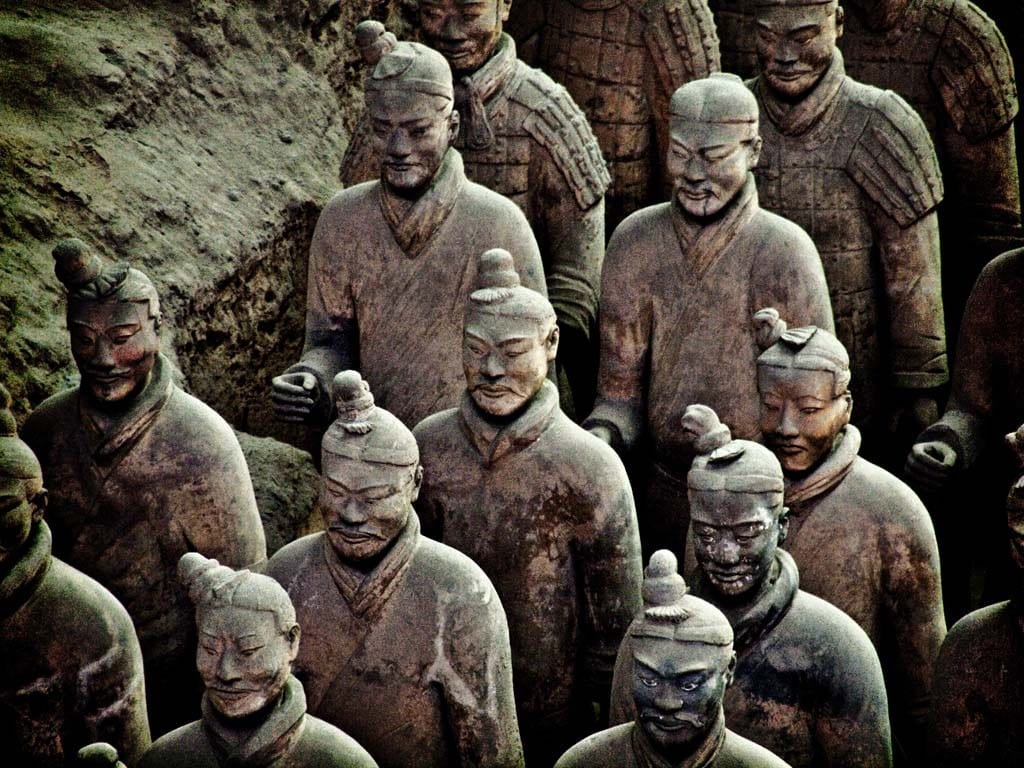


Space Law: A New Frontier
“Space law”, contrary to how it sounds, does not entail any notions of space sheriffs hunting bandits in lunar canyons. In reality, the body of international laws and customs that govern human activities in outer space is what is properly referred to as space law. Before the first human ventures into space, such as Sputnik, there was no clear agreement or conceptualization of what rules and customs should be applied to the new frontier. The US and the USSR both had little reason to extend airspace laws further up as they both would be repeatedly violating each other’s airspace through their space missions. Scholars discussed some concepts, such as terra nullius, which borrowed from traditional international law. States that were able to venture into outer space had little reason to challenge these developments.
The current foundation of space law is built on the 1967 Treaty on Principles Governing the Activities of States in the Exploration and Use of Outer Space, including the Moon and Other Celestial Bodies, or as it has more commonly come to be referred to as, The Outer Space Treaty. Key highlights of this treaty are the promise of no weapons of mass destruction (WMDs) in space, and that space and bodies within it are free for exploration and cannot be claimed by states. States are entitled to authorize the entry of their nationals to outer space and are also given responsibility for the conduct of non-state actors (NSAs) in space. The UN has also issued non-binding treaties that suggest customs that should be observed in space, such as taking into account the interests of developing states and the concept of the “common heritage of mankind”—that is, that outer space is for the benefit of all mankind. The extent to which the debates around space law are international in nature will be of critical importance going forward. Strong nations will pursue their interests in self-interest, and the balance struck between them and the amount they listen to other states’ concerns will be indicators of the future of space law.
The future promises to be a bold new frontier for space law. As more NSAs become capable of space exploration, new discussions are occurring on what to do about laws and customs governing space. How will disputes between these various parties interacting in space now be legally governed? Will space become weaponized? If resources are discovered, such as in asteroids, how will their ownership be established? Laws concerning commercial space flight have come under consideration by some governmental agencies, like the US Federal Aviation Administration (FAA).
An increasing amount of space debris also poses a unique problem. The liability for damage caused by space debris is not adequately defined. These objects are no longer considered under the control of states, and consequently, there are no sufficient methods to determine the party at fault in the event of a disaster. Given these challenges, there is reason to have hope, especially if you are preparing to enter the ever-shrinking terrestrial market for lawyers. Those of us who remain strongly rooted on this planet can also be at ease, as only the most intelligent individuals will likely be chosen to become one of the first “Space Lawyers”.

Testing Theories of American Politics
While not an altogether new phenomenon, the nature of the US’ democratic system in terms of its responsiveness to the needs of its citizens has been given considerable attention in recent years. Coinciding with this is the emergence of new challenges to the existing system. The Occupy Wall Street movement was an example of citizens protesting the actions of the US government in handling the financial crisis. Riots, such as those in the wake of the police shooting in Ferguson, Missouri speak to the racial tension existing there, but also have the political element of expressing anger at the government’s inability to provide necessary access to due process, life, and economic security. Internationally, the US’ democratic system, and the intertwined capitalistic policies has been recently scrutinized with groundbreaking works such as “Capital in the 21st Century” by French economist Thomas Picketty. Testament to the change in dialogue, US domestic discourse now regularly features phrases including “the 1%”, the “one-percenters” or similar terms to emphasize a separation between the average citizen and those who are seen to hold power.
In particular, this article will analyze and contextualize a recent peer-reviewed publication that has generated considerable debate in the US. “Testing Theories of American Politics” is a study by Martin Giles of Princeton University and Benjamin I. Page of Northwestern University and was published in the academic journal Perspectives on Politics. In the paper, the authors state, “When the preferences of economic elites and the stands of organized interest groups are controlled for, the preferences of the average American appear to have only a miniscule, near-zero, statistically non-significant impact upon public policy.” Subsequently discussed in interviews, the authors state that the US is less of a democracy and is closer to an oligarchy. Certainly this is not a revelation to the vast majority of analysts of the US political system, but what is unique about this study and the reason it has been given large amounts of attention is its methodology, specifically its data set. Where as previous empirical evidence has analyzed the different actors within the US system in a bivariate sense, the authors have created a single statistical model to measure the different actors against each other to provide a complete systemic analysis of the actors in the US political system.
To begin, the authors create four ideal-type theories, each representing an actor, to measure against each other. The first theory is the Majoritarian Electoral Democracy, which is said to represent the average citizen, or as articulated by Harold Hotelling, the “median voter”. The second theory is Economic Elite Domination, which is emphasized by the authors to represent the economic elites specifically, rather than those with elite social status. The third theory is Majoritarian Pluralism (which follows what James Madison outlines in the Federalist papers) with the actors involved being organized interest groups that represent the interests of all citizens. The final theory is that of Biased Pluralism, which is similar to Majoritarian Pluralism, but views organized interest groups as being representative of corporations, business associations, and professional groups. To test these theories, Gilens created a data set of 1,779 policy cases ranging from instances between 1981 and 2002. Each was a favor/oppose national survey of the general public about a proposed policy change. In order to account for the incomes of the respondents, the opinions of the respondents were divided into the 10th income percentile, 50th percentile, and the 90th percentile of income.
Testing the ideal types with this data allows for a comparative analysis of each type against each other. The results found are that the Majoritarian Electoral Democracy theory and the Majoritarian Pluralism theory have almost no empirical impact on the policy cases. Consequently, the arguments underlying them that the average citizen is represented or that the citizens are represented by interest groups are substantially undermined. The Biased Pluralism receives some limited support, suggesting that interests groups for corporations have an impact on policy. However, it is the theory of Elite Domination that receives the biggest support. Thus, we are left with the evidence that economic elites have overwhelming control of US policies to the extent that average citizens have no impact on the policies of their country.
What do these findings mean for the average US citizen? Certainly it gives ammunition to those who decry the current state of political affairs in the US and argue that the system is broken. These findings can also be interpreted as providing a bridge between economic and political critiques. Empirical evidence can now be provided to show that financial wealth is directly correlated with political representation in the US, despite the trappings of a democracy. In turn, the bridge between the two creates common ground to bring differing critical groups together in their pushes for change. What change should be sought and how to go about bringing such change should be the topic of future research, and more importantly, of future discussions among the average citizens of the US. Wherever the discussion goes, it is now clear that the fundamental relationship between those with economic power, the average citizen, and democratic institutions must be critically examined together.

Technological Advances in M-health
As smartphones and wearable gadgets cascade into every crevice of life, the prospect of technological advances in mobile health (m-health) that will usher in a transformative era of healthcare has appeared. M-health refers to the practice of medicine supported by mobile devices. Particularly in developing countries that have experienced a sharp rise in mobile penetration, a flurry of innovative experiments have been under way to revolutionize their ill-equipped healthcare systems and provide life-saving services to those who need them the most. For instance, Dr. Andrew Bastawrous and his colleagues have developed Peek, the portable eye exam kit comprised of a mobile app and a clip-on scanner added to a smartphone that can perform a wide range of ophthalmic tests, such as a cataract diagnosis. With this smart toolkit harnessing wireless technology, his team was able to diagnose eye diseases at an early stage and prevent a host of people in Kenya from becoming blind.
The example of Peek epitomizes one of the features of m-health technology, i.e. remote monitoring and diagnosis of patients. This technology allows doctors to remotely monitor patients, systematically analyze vast amounts of health data and effectively provide treatments in a timely manner. Another technological achievement in m-health has been made with wireless and wearable gizmos with a full range of sensors. These new devices constantly measure the health conditions of people, store their data and send an alert if something is wrong. These devices also set daily goals for the user’s fitness that motivate them to exercise. Take the Apple watch as an example. This product tracks the user’s heart rate and activity through a built-in accelerator and optical sensors. An app on the iPhone aggregates data from the watch and visualizes it to check the user’s health conditions and show whether their personal goals are being met.
Drawing upon the advance of sensor/network technology, one way to ward off medical catastrophes is by periodically checking whether people take their medicine on time. Proteus Digital Health, for instance, has been testing an ingestible sensor that collects and transmits data on when patients take pills. Vitality also rolled out a smart pill bottle, called GlowGaps, which contains a sensor inside the cap that monitors when the pill bottle is opened and wirelessly sends the information to caregivers. This fleet of low-cost sensors and internet-connected health software has been enabling the mass customization of healthcare and generating new business models for enterprises.
Notwithstanding a promising future sketched by relentless advances in m-health technology, there have been some concerns raised over this tech-driven brave new world. Not only the functionalities of these new gadgets render some of the healthcare workers’ skills obsolete (i.e. deskilling in Harry Braverman’s words), but also automatic diagnostic software may deprive people of an ability to self-scrutinize changes in their bodies. Furthermore, the way people behave can be significantly affected by the pre-programmed logic of software, and even be “disciplined to produce bodies docile” to particular algorithms (in Michel Foucault’s terms). For instance, people wearing the Apple watch may alter their lifestyles to achieve their work-out goals set by his computerized watch and, in doing so, inexorably yet imperceptibly discipline their body to fit in the world designed by the algorithms.
Another snag in these advances is digitalized personal information, including sensitive health data, which perpetually floats around the Internet. As wireless sensors incessantly upload users’ private data to the cloud, it will become more costly to delete it. This “perfect memory” via digital archives, according to Mayer-Schönberger, extends Bentham and Foucault’s Panaopticon that pressures people to self-censor. Furthermore, by accumulating such data, the ability to permanently self reflect on their “life log” will end up consuming much of their time. If this goes too far, people can be trapped within their individual worlds, detached from others. That is, people may spare more time to satisfy their narcissist cravings. All in all, there is little doubt that new mobile technology especially in healthcare opens up a frontier of endless possibilities. We must not forget that just over a century ago, unfettered advances of technology were employed to wreak havoc on human civilianization. It therefore behooves us to thoroughly ponder upon the unintended consequences of advances in technology on people and society.

The New State Nobody Saw Coming
The Islamic State (IS) has achieved many of its territorial and organizational goals during the past year. Operating both on the Syrian and on the Iraqi fronts, it has expended territorially, acquired new financial resources and grown in number its recruits. The rapid and vicious expansion of this well-organized Sunni jihadist group has taken by surprise the Iraqi government and it has de facto split the country between the IS, the Iraqi central government and the Kurds. The already precarious stability and unity of Iraq has been broken by the IS and to date, the country is trapped in a malicious spiral of sectorial and religious violence.
The recent evolution of the conflict may have taken some observers by surprise, but it was itself no surprise. Iraq’s current division comes as an exacerbation of pre-existing cleavages between Shia and Sunni, Iraqi and Kurds. Likewise, the Islamic State is not a newcomer, but is a terrorist group rooted in the ten-year history of jihad in Iraq. Arguably, the current state of affairs in the region comes as an output of the US adventurism in Iraq, which brought the conflict to a temporary termination, but not to a conflict resolution.
Although the presence of IS has been registered before 2013 in Syria and Iraq, the international community was only shaken by the recent escalation that caught the Iraqi army unprepared. Why did nobody see it coming? I think because an intelligence failure occurred within the international community, who underestimated the Islamic State and did not anticipate its kinetic turn. This occurred for several reasons. First, the fog of the Syrian civil war obfuscated the collection and the comprehension process of the early warnings. Second, custom thinking and the inductive approach drove the intelligence community (IC) to analyse and interpret IS as if it was similar to Al-Qaida, although the two are noticeably different organizations with different structures and goals. Custom thinking was also tied with an adaptability issue; after 9/11, it took the intelligence community years to adapt its understanding to the transnational threats of de-territorialized jihadist networks. Still today the IC has to adapt once more to transnational threats posed by a territorialized jihadist networks. Finally, the overconfidence of the former Al-Maliki government and his cognitive closure from the US government were also reasons that contributed to this intelligence failure.
Contrary to the western IC, the Islamic State clearly understood the geopolitical situation, recognized the threats and foresaw the opportunities. With an extremely pragmatic and ruthless approach, the IS was able to benefit from the divide et impera policy of Assad as it became the major opposition force to his regime in Syria, attracting further resources and recruits. On the operational level, the IS exploited the general discontent of the Sunni population against the Shia, allied with the residual Ba’athist forces, and used foreign support coming from all those states that felt threatened by the growth of Iraq as a petrostate. The same pragmatic approach was used dealing with the Kurds, which were attacked not for ideological or ethnical reasons, but instead for obtaining the control of strategic and oil-rich areas.
The Islamic State is a rational and pragmatic actor, it has ideological lenses through which it understands the world, but their ideology itself is not their core driver. For instance, it consolidates its power base with material incentives rather than relying only on ideology and religion. The population loyalty is first gained with welfare, employment, control of the prices, mass mobilization and then with ideology. Indeed, some Syrians support the IS because of its capability to fight Assad’s forces and to provide aid to the population, in the same way that some Iraqis support the IS because it represents the irredentism of the Sunni. For both the Syrians and the Iraqis, the current conflict is first and foremost a political struggle against governments, power and resources; religion is a secondary issue. Religion, paradoxically, plays a more important role internationally than locally. Let it be said, the version of Islam proposed by the Islamic State is so extremist, unhistorical and atypical that is appealing only to a small portion of the Sunni Muslim community. If in the short term, the propaganda and the ideological fervour of the IS is an effective tool to gain new recruits and capitals from foreign countries and to take the market share of Al-Qaida, in the long term it will undermine its own legitimacy. Today the political struggle of the Sunnis is going hand in hand with the radical religious struggle of the jihad, but once the former will be achieved, the latter will loose its appeal and utility. This combination of politics and jihad is both the strength and the weakness of the Islamic State. If the Sunni political struggle is addressed independently from the jihad, there are still margins for a conflict resolution. But will Iraq be pragmatic enough to separate the two issues? Will the US and Europe make the effort of opening a dialogue with the Sunnis?
Conflict termination without conflict resolution is useless, and contemporary history proves it. U.S. Secretary of State John Kerry recently said to CNN that the US coalition “is deeply committed to the effort to terminate” the Islamic State. Once more, it is all about terminating, not solving. And here we are again, bombing today, as we did yesterday and as we know we will do tomorrow.

Dragon Ready to Forge Ahead: Will China overtake US?
The Chinese juggernaut is expected to overtake the American eagle by 2021 in terms of GDP, according to The Economist’s latest estimates (Aug 2014). In fact, China already outpaced the U.S. as the world’s largest manufacturing power in 2010. Since then, it has been further widening its lead, according to the 2013 UN research. Notwithstanding a small dent in its recent growth trend line, partly owing to a slowdown in export demand from key markets (e.g. U.S. and EU), China has been able to achieve its growth target of 7.5% in the second quarter of 2014. Yet a fleet of naysayers still do not believe these numbers indicate an upcoming shift in the world’s power distribution and, in the face of cognitive dissonance, cling to a weakly-grounded belief that United States of America continues to be the one and only hegemon at least until they rest in peace. Stiff opposition to an impending appearance of Chinese hegemony is predicated on two assumptions. The first one is that China cannot sustain its astonishing growth and is soon doomed to fall from its grace. The other is that even if China is able to surpass the U.S. in the economic area, the U.S. will still be dominant in other areas (e.g. military, culture and diplomacy).
Will China soon hit a hard landing and put an end to its three decades of remarkable economic prosperity? There are those who have been saying so for years. Their concerns are flavored with you-name-it factors (e.g. spiraling inflation, mounting debt burdens, widening income inequality, rampant corruption, lack of political legitimacy). However, the Chinese leadership has been taking these concerns about economy-destabilizing elements very seriously and has been responding to each one with certain measures. For instance, after experiencing extremely high inflation as a by-product of relentless economic growth (e.g. about 20% in 1988 and more than 25% in 1994), Chinese leaders have been making every effort to avert double-digit inflation, and their efforts have come to fruition, with an average inflation of over 3% in the past decade according to China’s official figures. Witnessing Western asset bubbles leading to financial crisis, some harped on China’s looming debt problem, exacerbated by local governments’ reckless spending. The Economist, however, recently (July 2014) concluded that China’s debt-to-GDP ratio of 200% is far from confronting a debt crisis, considering that Euro crisis countries had far higher debts (e.g. more than 400% for Ireland). Grasping the gravity of problems related to inequality and corruption, China’s cabinet, under President Xi’s leadership, has also implemented a series of plans to combat these problems, resulting in Mr. Xi’s skyrocketing popularity and solidification of his political legitimacy. One thing to note is that none of these concerns have yet been able to snuff out China’s ferocious economic flame.
In spite of the aforementioned concerns which may destabilize macroeconomic conditions, a country’s annual production growth is driven primarily by three important factors: capital, labor and innovation. There are not many squabbles over China’s capital deepening which heightens its labor productivity and ramps up innovative capabilities. Yet some raise a dissenting voice over China’s sustaining a competitive advantage in manufacturing, taking into account its aging population and increasing wages. The Chinese government recognizes the long-term ramifications of demographic change and has been undertaking a suite of policies that aim to mitigate these impacts. President Xi, for instance, relaxed the one-child policy to halt a decline in China’s birth rate. It must be noted that an upsurge in elderly populations and wages is not necessarily a detriment to China’s economic growth. Aged workers are likely to be more skilled than the young, which can be manifested in the form of higher labor productivity. More importantly, China has been attempting to wean itself off an overreliance on investment in construction and manufacture-based exports in order to gradually transform its economy into a consumption-driven one. In such a case, a rise in real wages, in fact, helps fuel domestic consumption.
Deficiency of innovation is also an oft-cited pretext for China skeptics to scoff at China’s sustainable growth. People like Adam Segal firmly believe that America’s Schumpeterian approach will unceasingly fare better at leading quality innovation than China’s knock-offs-churning-out model, brushing aside troubling evidence of China’s staggering numbers of scientific papers and patents. (Check Segal’s book Advantage: How American Innovation Can Overcome the Asian Challenge.) Yet Dan Breznitz and Michael Murphree warn about a parochial view of innovation as the invention of breakthrough products. In their eyes, China is extremely competitive at other types of innovation (e.g. process and product innovation), which yield bigger rewards for an emerging country. (See Breznitz and Murphree’s book, Run of the Red Queen.) Moreover, numbers on innovation momentums are tilted in favor of China. Whereas the U.S.’ has stagnated over the last decade, China’s R&D expenditure as a percentage of GDP has constantly been on the rise, estimated to forge ahead of that of the U.S. in less than 10 years (Battlelle’s 2014 Global R&D Funding Forecast). There is little need to reiterate a spew of Chinese innovative firms’ in-search-of-excellence sages (e.g. Huawei, Lenovo, Haier, Xiaomi, Baidu), which have been already extensively covered by the Western media. Alibaba, which had the largest ever IPO, and whose corporate value now tops Facebook, IBM and Samsung, is a signpost hinting that the awakened Chinese dragon is already shaking the world.
Even if we accept that the Chinese economy will leapfrog the U.S.’ one day, does it necessarily mean that America will lose its dominance in other areas (e.g. military, culture and diplomacy)? Some international relations (IR) scholars, such as David Shambaugh, strongly believe that American hegemony will continue. (Check Shambaugh’s book China Goes Global.) To unravel his arguments, he raises the wrong question, “Is China [currently] influencing the actions of others and the trajectory of international affairs in various domains?” The right one should be, “Has China’s influence over the actions of others become larger than before, and will it become greater in the future?” Furthermore, it is a mistaken belief that the Chinese leadership has strong intentions of influencing international affairs in various domains in the first place. As backed by much of Chinese literature, China’s primary policy goals are economic prosperity and domestic stability, which is highly likely to remain the case. Besides, Shambaugh’s methodological approach is grounded on a naïve presupposition that military, cultural, diplomatic capability each carries similar weight with an economic one, and these power resources are not fungiblewith one another.
A.F.K. Organski, the IR guru that developed Power Transition Theory, clarifies three elements of power that are key to the transition of dominant power—that is, economic growth, population, and political capacity. The first two variables favor China writ large. The only thing left for America is political capacity. Your correspondent does not want to deterministically conclude that America will lose its battle even on the dimension of political capacity. Yet influenced by penetrating insights from Marx and Bourdieu, this writer views economic capital as a prime power source that changes dynamics in this stratified world. Looking through his economically-polarized lens, time is on China’s side.

All That Glitters Is Not Gold
China’s fundamentals may not be as strong as you’ve been told.
Place your bets, ladies and gentlemen. The fix is in: China will be the next superpower.
We’ve been told the economic projections all assure it, but do they? The same projections were made for the Eastern bloc in the 1960s, Japan in the 1980s, and the Asian Tigers in the 1990s. In each of those decades the conventional wisdom, particularly in the United States, whipped policymakers into a frenzy over the implications of dizzying growth numbers. And yet to varying degrees, history has proven the conventional wisdom wrong. Just as history has a tendency to repeat itself, there is strong evidence to suggest it may be wrong on China as well.
First, let’s examine economic strength, upon which most “China superpower” predictions are predicated. One of the most oft-cited figures is China’s GDP. In 2013 China met its target to expand by 7.5% – more than double that of the United States, but also only slightly more than half the 14.2% it recorded only 6 years earlier. And how do these numbers stand up qualitatively? Even as GDP has plummeted, it is increasingly being funded by credit accumulation, with the credit intensity of growth now triple what it was eight years ago. Of course, the rapid expansion of debt is concerning but not necessarily game-changing. Much more alarming is the housing market bubble. Of China’s 27 largest cities, 21 have unused housing inventory that exceeds 12-month demand, and housing costs in Shanghai have increased 273% in the past seven years. According to a recent assessment published by analysts at Japan-based Nomura bank, “It is no longer a question of ‘if’ but rather ‘how severe’ the property market correction will be.” As much as 20% of China’s GDP is derived from property investment, and a sizable chunk of China’s wealth is held in real estate equity. The implications mirror the U.S. property crash of 2008, but are magnified by the fact that China has more than 10 times as much spare housing inventory. When this bubble bursts, it will be very painful.
These numbers aren’t surprising. In 1994, Paul Krugman described the “myth” of the Asian Miracle as “perspiration rather than inspiration.” He compared Asia’s high growth levels to historical examples in which the short-term mobilization of new labor and capital generated remarkable growth. As those economies matured and new inputs became scarce, GDP growth took a corresponding dive. The parallels with China are remarkable. Labor costs are rising rapidly, debt is soaring, and urbanization projects are becoming increasingly desperate. Unless China can successfully transition its economy away from manufacturing towards consumption and innovation, it is destined for a significant cooldown.
But there is more to China’s fragility than just economics. To the extent that “demographics is destiny,” China’s demographic future looks rocky. 35 years of the one child policy has sent the birth rate plummeting to well below replacement levels, which means the population of 1.3 billion will actually begin to shrink and age during our lifetimes. The implications of this are profound: the elderly dependency ratio is rising at an unprecedented rate, the working age population is beginning to dry up; and due to a cultural preference for sons, the gender gap is expected to reach up to 35 million extra men by 2020. To use the common phrasing, China will get old before it gets rich. The social and welfare burdens these trends foretell are alarming, and unlike economic growth predictions, demographics are an absolute certainty.
The confluence of a cooling economy and a demographic nightmare may be too much for the historically deliberate and risk-averse CCP to bear all at once. Premier Li Keqiang has identified 7.2% growth as the minimum level needed for China to provide jobs to the 10 million new workers who enter the labor force every year. With expectations for 2015 set at 7.3%, (a decline of 0.2% year over year) we are very quickly approaching the breaking point. Chinese performance legitimacy, the idea that the CCP will maintain its support as long as it performs well, will begin to evaporate, as unemployed male youths grow dissatisfied with emerging social and economic trends. They are being raised in an unequal society where it’s becoming more and more difficult to find either a job or a partner. It follows as no surprise that since 2011 the CCP has been spending more on domestic security ($125b in 2013) than the military ($120b in 2013.) Since the Tiananmen protests 25 years ago, social unrest has exploded by a factor of 20 to more than 180,000 incidents per year. These are no real threat to CCP control, but instability further impacts economic fundamentals, and it appears things will get worse before they get better.
Finally, when assessing China’s viability as a superpower, we must evaluate what being a superpower entails. China’s strength is one-dimensional, drawn from its economy. But there are dozens more areas in which it still comes up short: leadership, military power, soft power, diplomacy, domestic stability, entrepreneurship, innovation, transparency, corruption, pollution… the list goes on. (For further reading on this, see David Shambaugh’s excellent Brookings piece entitled, “The Illusion of Chinese Power”). Yet the CCP has shown little interest in undertaking the systemic reforms necessary to adapt and really meet these challenges, preferring a more incremental pace that is simply too slow.
Even more significant is the question of whether Beijing has any interest in being a superpower in the first place. The government has repeatedly abstained from taking stands on issues of regional and global stability. In the South China Sea they’ve taken the opposite tack and begun unilaterally taking control of disputed islands and territories. In Hong Kong this year, we have learned what Beijing’s vision of a free election looks like. Additionally, China follows its own interpretation of many global norms such as non-refoulement, universal human rights, and R2P. China has massively reaped the benefits of the post-WWII liberal order while wholeheartedly rejecting the responsibilities expected of its leaders.
Predicting the future is difficult, and China may yet continue to beat the odds. But prudence demands we consider the risks we take by tying our economic and political futures to the mirage of the Chinese GDP machine. This author is not anti-China. Indeed, the world does much better with a strong and stable China. But there is real cause for concern when it comes to China’s economic strength and leadership, and this is very bad news for all of us. If I were a betting man, I’d probably sit this round out.

Causality and Big Data
“You see there is only one constant. One universal. It is the only real truth: Causality. Action, reaction. Cause and effect.“
The Frenchman
America Online’s 2006 crisis and Edward Snowden’s disclosure got great amounts of public attention, criticizing surveillance parameters and the ethics of big data usage. In this article, I want to look beyond privacy and rather talk about institutionalization.
The first thing we should ask is fundamentally how does a search engine work? As any statistical correlation study, big data also starts with sampling but rather than random distribution it collects everything possible where sampling becomes equal to all of the data. Interpreters then make several correlation studies, but usually interpretation ends up with probabilistic causality (factors increase the probability of another). This is normal because as the numbers get bigger, distortion becomes less visible and lets us see things that we have never thought about. Though as we have ‘smoking causes cancer’ signs on cigarette packages, we also should have ‘big data does not mean causality’ because things are getting wrong without any regulation and we have only started to see its implications.
Causality is the relationship between one specific event with another and is generally used to express the cause and the effect. From a logical point it is defined as, “If x is a necessary cause of y, then the presence of y necessarily implies the presence of x. The presence of x, however, does not imply that y will occur.” In reality every cause is an effect of another, forming an infinite casual chain. Mathematical equations have the constant K as a hidden variable to represent the influence of freewill, therefore, we can disregard freewill to manipulate information. Consequently, choice becomes meaningless and people become passive actors in the world not changing anything. It seems awkward, but with big data correlations, we are facing it every day.
Internet neutrality is a principle that means service providers use all sorts of data in a similar way rather than discriminating any type. A neutrality clause in human rights also protects users from telecom companies that may try channeling the users forcefully to their own sites for economic benefits. Although digital freedoms are promising, we are still missing data and algorithm neutrality. Consequently, companies like Facebook tell us which friends we are more close to by looking to our “like” clicks. Is it a correlation or causality? What are the probable consequences?
An insurance company may fine you higher according to your unhealthy food Foursquare check-ins; a bank may give you a loan based on your Amazon consumption rate, and maybe a resume analyzer compares our wordings with successful candidates. There are many other examples out there and most of them are improving our lives in a positive way, but can they be perfectly knowledgeable about all factors involved? Or from another perspective, do we still have free will? Maybe not. A prayer gathering may be seen as a probabilistic terrorist event, or irregular social network behavior can signal a person’s criminal behavior. Don’t get me wrong, big data is not bad at all. It also shows other correlations related to the same event if the analyst is asking the right questions and properly regarding room for error in correlation. That’s why a person flying with an eyebrow-raising name (Bin Laden for instance) can enter to the US without any immigration problems.
We need to set rules and regulations to at least educate ourselves rather than inflict punishment on people unjustly because most of the time different types of information from different sources do not align perfectly. Otherwise, we could have disregarded Thomas Edison, Albert Einstein or Steve Jobs because of their childhood success signals. Were they just lucky? Luck is not a rational explanation, and it is more likely that we are missing some indicators from our analysis.
Moreover, can we say that certain groups of people owning power are exploiting the means of information? Probably not. After all, we do not know the causality of their cruel manner but there is one thing certain, we should find a way to keep neutrality. Viktor Mayer Schönberger and Kenneth Cukier’s book Big Data comes up with several solutions. They recommend usage of general topics rather than smaller relationships, accepting the messiness of data, phrasing the usage as correlation instead of causality, redefining the justice and freedom act, forming lawyers to fight data cases and lastly, reducing permanent storage memory.
At last, we are humans, not games defined by rules to be as predictable, as chess peons. We are clearly not looking for a dictatorship. Causality is an infinite chain, and YouTube will never know why I liked that video, so I just use data and not let data use us.

Decentralization of Production and Customization Culture
“Any customer can have a car painted any color that he wants so long as it is black.”
Henry Ford
Fordism, named after Henry Ford, refers to a modern economic system built on a standardized form of mass production using assembly lines. It was preceded by Frederick Winslow Taylor’s scientific management techniques whose objectives were to improve efficiency and achieve economies of scale. Thereafter, benefiting from standardized production methods, outsourcing models were developed and became a trend to reduce labor costs. As a result mass production became a major factor of international trade.
Three years ago I wanted to produce mouthwash dispensers. They had a simple plastic design but the investment amount for 10 units was nearly the same as 500,000 units. This restrained me from testing the market because there was too much risk to produce without knowing market demand and whether the product would be easily replicable. At the time 3D printing was not popular, but now things have changed.
3D printing is an additive manufacturing method that melts plastic wire to create an object layer by layer. It can produce a variety of products by changing print heads using different types of material including plastic, metal, ceramic, paper and even biological cells. These printers are still in the development stage. Yet according to McKinsey’s analyst reports, the 3D printing industry doubled every year from 2007 and 2011 and its economic impact will amount to somewhere between $230 billion and $550 billion per year by 2025.
Although in the near future 3D printing cannot be used for mass production, it has several advantages over assembly lines. Design can be printed directly from a personal computer and, in turn, the procedure of production becomes as easy as printing a paper. The printer can manufacture various types of objects one after another, and additive manufacturing reduces the material waste. Among these three features, printing different tasks is the most important one because it doesn’t have any additional cost to make something completely different. Although a 3D printer does not offer economies of scale, it does not penalize a change in each individual unit, resulting in a culture of customization.
Until now 3D printing was used primarily for prototyping but with Moore’s law it has reached the tipping point for widespread applications. Since 1980 its performance has improved, costs have reduced, the range of usable material has expanded, software usage has become open-sourced and initial patents have expired. We do not usually hear about such interesting news. According to Wohlers Report 2012, Boeing prints 200 different parts for ten aircraft platforms, Xerox is developing an ink to substitute silicon printing for solar cells and Solar Sinter uses sand to produce glass objects. There are even more interesting projects such as 3D house printing. McKinsey expects 3D printing to have a substantial impact on toys, accessories, jewelry, footwear, ceramics, and simple apparel by 2025. More importantly, 3D printing replaces the culture of mass production with that of customization where individuals may order differentiated products, which is quite different from Ford’s “only black” model. According to Chris Anderson’s Makers: The New industrial Revolution, three major things will be different form the traditional manufacturing: free variety, complexity and flexibility.
Can we say that assembly lines will disappear? Not necessarily. Production, however, will be affected greatly by customization culture and shorter product cycles arising from fast-changing consumer demand. Even if 3D printing fails to facilitate a culture of customization, there is another giant awakening: advanced robotics. McKinsey estimates the usage of industrial robots to take up 15 to 25 percent of manufacturing, packing and construction by 2025. It seems far away but we can see some of the applications today in Tesla’s Fremont factory.
Tesla is using hundreds of Kuka robots to do basically everything by switching arms from welding, gripping to bolt driving. Their most important feature is programmability. Each robot can be programmed to undertake different tasks, and in Tesla’s case different programs produce different models. So what does a programmable factory mean? Does it bring any advantage over assembly lines? Yes! Tesla produces almost everything in-house not only to get advantage of learning curve effects and to reduce transaction costs but also to test newer production methods. Consequently, makers become more innovative, consumers become more satisfied and overall life cycles become reduced. As a result centralized classical factories lose their importance.
Decentralization has been taking place along with customization culture. Sooner or later an individual with a 3D printed prototype will use crowdfunding (such as through Kickstarter) to fund a single Kuka robot to make an in-house production. Maybe it seems utopian but production is shifting towards mass customization and factories will be as printing offices, just a click away. Therefore a good strategy for countries should be to cultivate innovative individuals rather than generating cheap assembly lines because sometime soon labor will have a different meaning in the two-factor trade model.